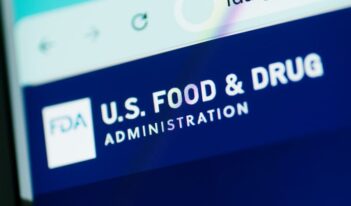
Newly approved type of generic drug defeats competitor in court and continues towards market.
Biologics, pharmaceutical drugs made in or extracted from natural systems, are the cutting edge of biomedical research and sales are soaring. They potentially can treat a range of diseases for which there has previously been no treatment, and are often more effective at treating disease while presenting decreased toxicity risks.
While the U.S. Food and Drug Administration (FDA) has long been approving biologics, there was—until recently—no process for approving generic biologics, known as a biosimilars. With no biosimilars on the market, biologics producers faced little competition. Biosimilars’ entrance into the marketplace could revolutionize the pharmaceutical industry, drastically decreasing prices on cutting edge drugs. Consequently, some biologic producers are contesting the FDA’s approval of a biosimilar which would compete with their product.
Last month, the FDA approved the first biosimilar drug, Zarxio. Zarxio is modeled after Neupogen, a biologic which has reportedly been successful at preventing infections in patients with certain types of cancer undergoing chemotherapy. Amgen, the company that produces Neupogen, immediately filed suit to delay Zarxio’s marketing, alleging that Zarxio’s manufacturer failed to meet certain notification requirements. Recently, Amgen lost a motion in district court to prevent Zarxio from entering the market, allowing the biosimilar to move forward into the market.
Generally, pharmaceuticals are very expensive to develop because of the rigorous safety requirements and high failure rates at testing. This results in high prices for consumers. In the conventional pharmaceutical arena, the FDA employs an abbreviated drug application process allowing competing manufacturers to produce chemical copies of a brand name drug without replicating all of the safety testing. Once the brand name drug’s patent has expired or the generic has proved that it does not infringe on the brand name’s patent, these approved “generics” can enter the marketplace, significantly lowering the price for the underlying drug and increasing access to its benefits.
Unlike traditional pharmaceuticals, biologics are not chemically synthesized in the lab, are very large (up to 1000 times the size of a conventional pharmaceutical), and have unknown exact physical structures. Thus, it is impossible for a competitor to produce a copy of a biologic in the same way that a generic drug copies a conventional pharmaceutical. However, biologics present the same or greater consumer access concerns which make generics important.
Consequently, the Affordable Care Act included an abbreviated licensure process to license biosimilars. Under the Biologics Price Competition and Innovation Act (BPCIA), enacted in 2009, the FDA will approve a biosimilar if there is a showing of high similarity to an FDA-approved biologic, known as a reference product. The biosimilar cannot have any clinically meaningful differences in safety or effectiveness. It must use the same action mechanism, administration route, dosages, and strengths, and can only be used to treat the same conditions. The increased complexity of biologics necessitates a more thorough development, testing, and review process than that utilized for other generics. Additionally, biosimilars require a doctor’s involvement in the prescription process.
Zarxio’s maker, Sandoz, employed this new process, receiving FDA approval in early March. Prior even to the FDA’s approval of Zarxio as a biosimilar, Amgen—the reference product’s manufacturer—filed a lawsuit seeking to prevent the marketing of Zarxio based on failure to provide Amgen with a copy of its application and description of its manufacturing process within twenty days of the FDA accepting the application for review, initiating a negotiation process.
Recently, Amgen’s attempt to block Zarxio failed. A federal court in California interpreted a provision of the BPCIA not to require these disclosures and negotiations. Had Zarxio’s manufacturer negotiated with Amgen, it could have received a temporary safe harbor against actions alleging infringement. However, the court held that not engaging in the disclosures was within the company’s rights as well, finding the disclosure and negotiation requirements only applicable when a company chooses to engage in the negotiation process.
The court also permitted Zarxio’s producer to begin immediately marketing its biosimilar upon the application’s approval instead of requiring a 180-day waiting period afterward. The court held that the required 180-day notice period begins as soon as notification is given and not after approval of the new biosimilar, as any other interpretation would impermissibly expand the brand name biologic’s scope of exclusivity by six months.
Although Amgen likely will appeal the court’s decision, it is another significant step towards biosimilars reaching the U.S. marketplace. Biosimilars are likely to revolutionize the pharmaceutical industry. A large number of biosimilars currently used in Europe or under development will attempt to follow Zarxio onto the market as the corresponding biologic’s exclusivity period ends. Competition with biosimilars will drive down the price of biologics, according to a Congressional Budget Office prediction, saving the U.S. health system $25 billion over the next ten years.
Europe has allowed biosimilars for nearly a decade, leading to a reduction in price for some biologics of 20 to 30 percent. The discounts may not be as substantial as those present with generics because of the increased complexity of developing and receiving approval for a biosimilar. However, a lower price may still increase the use of biologics, thus increasing the number of individuals with access to these groundbreaking drugs.



